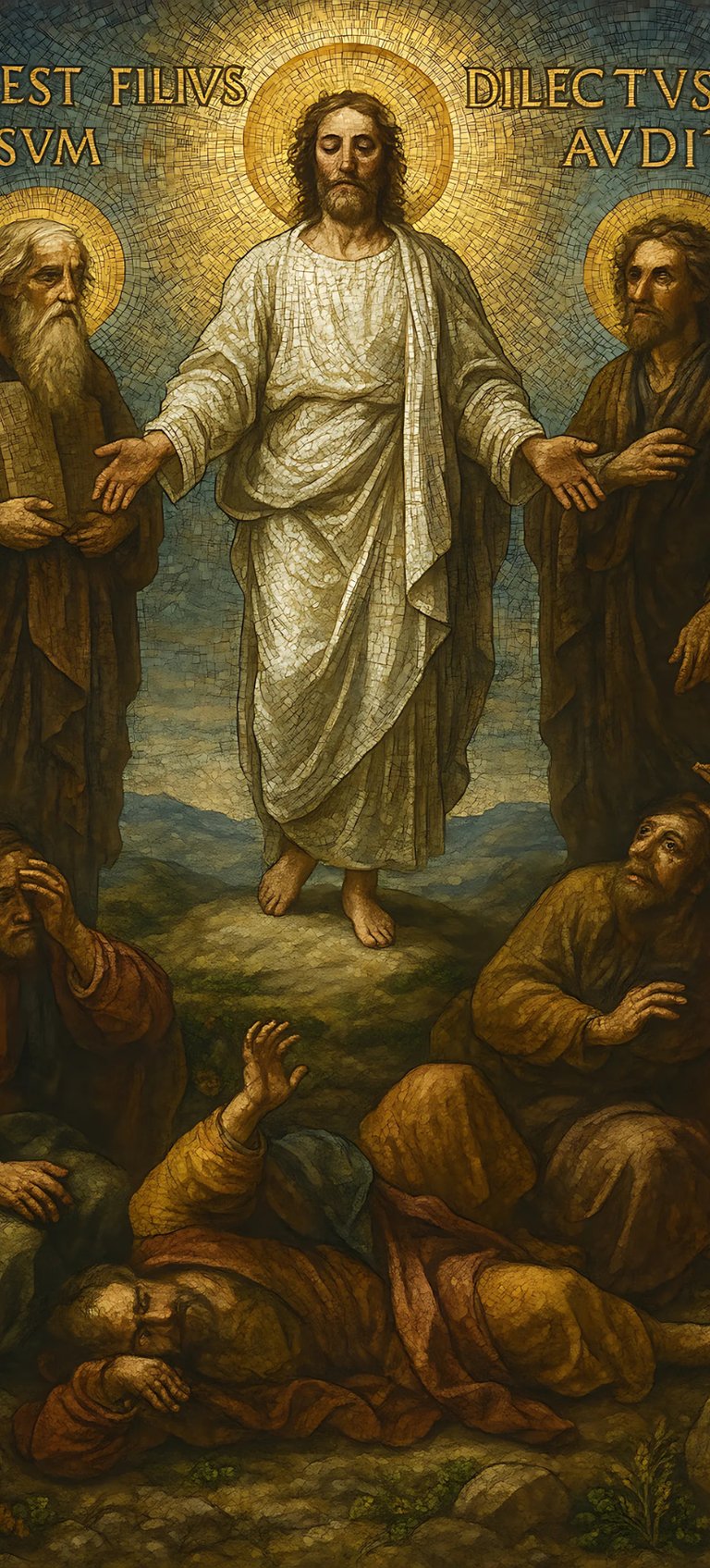The Transfiguration: When Eternity Touched Earth
Feast Day: August 6 | Luminous Mystery of the Rosary
Halo & Light Studios
8/6/20252 min read


On a quiet mountain—traditionally believed to be Mount Tabor—something utterly extraordinary happened. Jesus unveiled His divine glory to three of His closest disciples. Peter, James, and John had seen Him teach, heal, and pray, but now they were being drawn into something far deeper—a glimpse into eternity itself.
“His face shone like the sun, and His clothes became white as light.” —Matthew 17:2
Some saints and mystics have suggested that the Transfiguration may have been a kind of sacred “time crossing.” That is, Jesus, in His divinity, may have been speaking to Moses and Elijah in their own historical moments—not merely transporting them into the first-century world. Moses and Elijah—long-departed prophets—stood alive in the present moment, speaking with Christ. They weren’t ghosts or symbolic projections. As St. Thomas Aquinas affirmed, the Transfiguration was a true, bodily manifestation of heavenly glory. After all, time itself is a creature, and Christ, the eternal Logos, is not bound by it.
As Pope Benedict XVI wrote in Jesus of Nazareth, the Transfiguration reveals that Jesus is the meeting point of time and eternity, the fulfillment of the Law (Moses) and the Prophets (Elijah). In Him, past and future are fully present. Hans Urs von Balthasar describes the scene as “eschatological theater”—a glimpse into the divine order where heaven breaks into earth. Moses holds the tablets of the Law, perhaps still in the midst of his mission. Elijah, the prophet who never tasted death, stands beside him. Both converse with Christ as though from beyond the veil of time. Origen of Alexandria, an early Church Father, reflected that “to God, all are alive” (cf. Luke 20:38).
The Transfiguration is not only a Christological moment—it is also Trinitarian. Like Jesus’ baptism, this event reveals all three Persons of the Holy Trinity:
God the Son is transfigured in radiant glory.
God the Father speaks from heaven:
“This is My beloved Son, with whom I am well pleased; listen to Him.” (Matthew 17:5)
God the Holy Spirit is symbolized in the bright, luminous cloud—a biblical sign of the Spirit’s presence, just as at Mount Sinai and in the wilderness.
This profound theophany shows that the plan of salvation is the work of Father, Son, and Holy Spirit—united, revealed, and radiant in perfect communion.
The Transfiguration wasn’t simply a dazzling moment—it was a revelation, rich in meaning and purpose. It offered:
A foretaste of the Resurrection
A confirmation of Jesus as the fulfillment of the Old Covenant
A preview of the heavenly glory awaiting the faithful
And it prepared the apostles for what lay ahead: the scandal of the Cross.
When the vision faded, Jesus stood alone. No blinding light, no prophetic visitors—only the road to Calvary remained. But that mountain moment would echo in Peter’s heart, prompting him later to write: “We were eyewitnesses of His majesty.” —2 Peter 1:16
The Church honors this moment every August 6, and it remains one of the Luminous Mysteries of the Rosary. The Transfiguration invites us to see more than what meets the eye—to believe that God is not only in the storm but also in the glory.
In seasons of suffering, doubt, or dryness, this mystery reminds us:
There is light beyond the shadow. There is glory beyond the grave.
“We have seen His glory, the glory as of the only Son from the Father, full of grace and truth.” —John 1:14
